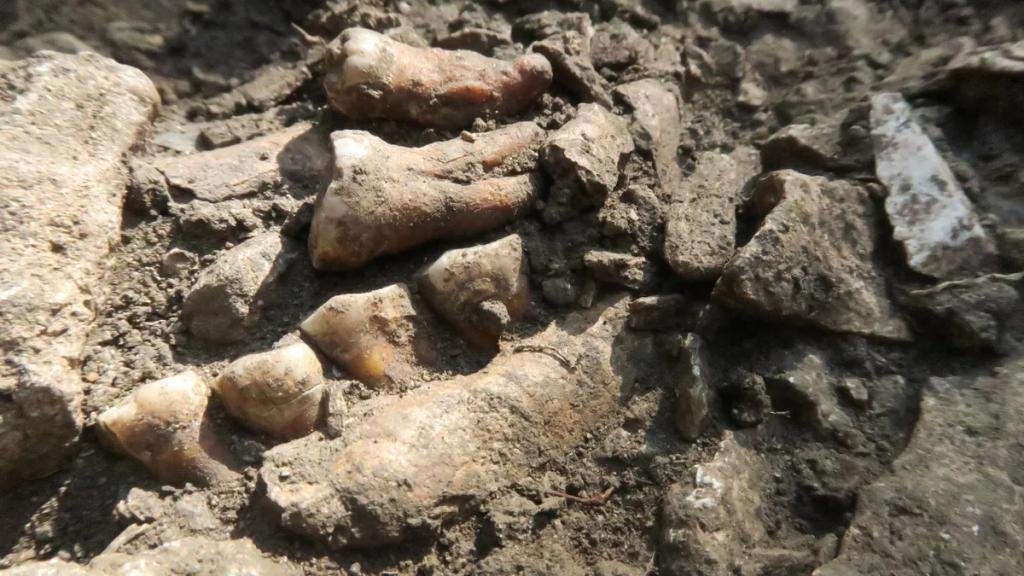A fossilized Neanderthal skeleton unearthed in France’s Rhône Valley may belong to a previously unknown lineage, challenging long-held beliefs about the extinction of Neanderthals.
 Thorin’s remains were first discovered in 2015 at Grotte Mandrin, France. Credit: Ludovic Slimak
Thorin’s remains were first discovered in 2015 at Grotte Mandrin, France. Credit: Ludovic Slimak
Nicknamed “Thorin” after a character from J.R.R. Tolkien’s The Hobbit, this Neanderthal lived around 40,000 to 45,000 years ago during the late Ice Age, yet his genetic makeup traces back much further—some 100,000 years, indicating a prolonged period of isolation from other Neanderthal populations.
Thorin’s remains, first discovered in 2015 at Grotte Mandrin, are being painstakingly excavated by an international team led by Ludovic Slimak, a paleoanthropologist at the University of Toulouse and the French National Centre for Scientific Research. So far, 31 teeth, part of the jaw, and five finger bones have been unearthed. The discovery, described as a once-in-a-lifetime find, is the first Neanderthal body found in France since 1979.
The discovery has prompted a reevaluation of the prevailing view of Neanderthals as a homogeneous population spread across Europe. Geneticists, including Martin Sikora of the University of Copenhagen, sequenced Thorin’s genome and were surprised to find that it more closely resembled Neanderthals who lived over 100,000 years ago, suggesting that Thorin’s population had been isolated for millennia. “The divergence between Thorin and the other late Neanderthals is comparable to all modern humans out-of-Africa,” Sikora explained to IFLScience, emphasizing the unexpected genetic diversity within the Neanderthals.
 A reconstruction of an elderly Neanderthal man. Credit: Neanderthal-Museum, Mettmann
A reconstruction of an elderly Neanderthal man. Credit: Neanderthal-Museum, Mettmann
This genetic isolation is significant. Slimak, a researcher with France’s National Centre for Scientific Research, noted, “The Thorin population spent 50,000 years without exchanging genes with other Neanderthal populations.” The team discovered that despite living within a 10-day walk from other Neanderthal groups, Thorin’s population remained completely separate. Slimak speculated that Neanderthals may have perceived the world differently from Homo sapiens, leading to this isolation. “This would be unimaginable for a Sapiens,” Slimak added.
Thorin’s case illustrates the biological and cultural insularity that may have contributed to the Neanderthals’ extinction. As Slimak observed, isolation limits genetic diversity, which is crucial for a species’ adaptability. When populations do not mix, they risk becoming more vulnerable to environmental changes, diseases, and other threats. This lack of interaction and genetic flow may have been a significant factor in the Neanderthals’ eventual disappearance.
The excavation at Grotte Mandrin is ongoing, and the researchers believe they may uncover more remains of Thorin, offering further insights into his life and lineage. Interestingly, Thorin had two extra molars, a sign of possible inbreeding in his isolated population. Despite this, Thorin’s remains are in remarkable condition, allowing researchers to continue exploring the genetic and archaeological mysteries surrounding his life.
Thorin’s story challenges the simplistic narrative of Neanderthals as a single, uniform population wiped out by Homo sapiens. Instead, it suggests that Neanderthal populations were far more diverse and complex than previously thought.
More information: Slimak, L., Vimala, T., Seguin-Orlando, A., Metz, L., Zanolli, C., Joannes-Boyau, R., … Sikora, M. (2024). Long genetic and social isolation in Neanderthals before their extinction. Cell Genomics, 4(9), 100593. doi:10.1016/j.xgen.2024.100593





